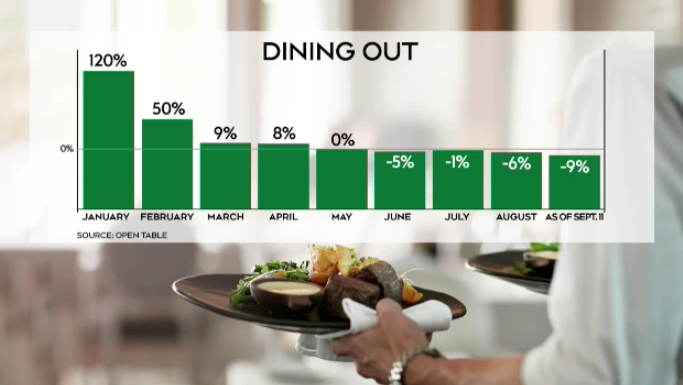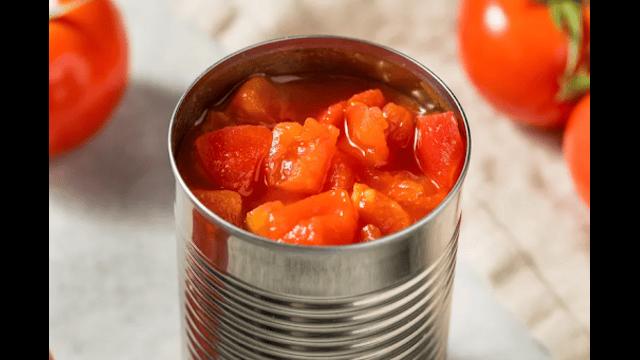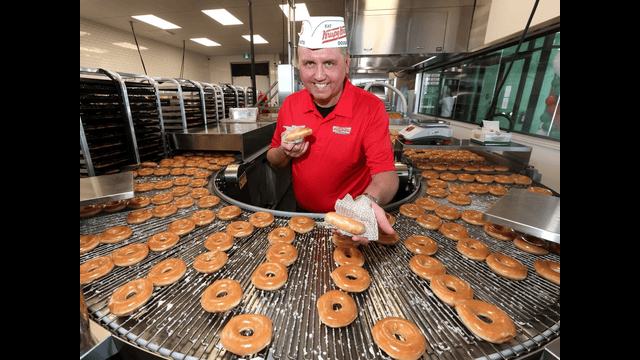
This graph measures the weekly change in seated diners for 2023 vs. 2022 in Toronto (Source: OpenTable).
Restaurants in Canada are grappling with a challenging economic environment as sales continue to decline amidst soaring menu prices and overall inflation. Statistics Canada revealed that the cost of food purchased from restaurants surged by 5.1% in January compared to the previous year, aligning with a trend observed in the preceding months.
Moreover, the prices of alcoholic beverages served in licensed establishments also rose by 5.3% year over year. These escalating prices have contributed to a dip in overall seasonally adjusted restaurant sales, which decreased by 1.9% to $7.9 billion in January, according to StatCan.
The decline in sales was most pronounced in full-service restaurants, which experienced a sharp drop of 6.4% annually. Special food services and drinking places also saw declines of 1.8% and 0.5%, respectively. However, limited-service eating places bucked the trend, reporting a 2.4% increase in sales in January.
Kelly Higginson, President and Chief Operating Officer at Restaurants Canada, expressed deep concern over the StatCan data, describing it as "pretty frightening" for an industry still reeling from the effects of pandemic-related closures. She attributed the sales decline to customers having less discretionary spending due to inflationary pressures, which have been building for some time.
According to Higginson, restaurant businesses are grappling with across-the-board cost increases, including those related to food, equipment, repairs, utilities, wages, and insurance. The sustained period of declining sales coupled with rising costs is beginning to have a tangible impact on the industry's bottom line.
The adverse effects of the economic environment are widespread, with seven Canadian provinces experiencing declines in food services and drinking place sales in January. Particularly notable were British Columbia, Saskatchewan, Quebec, and Ontario, which saw the largest declines in sales.
Sylvain Charlebois, Director of the Agri-Food Analytics Lab at Dalhousie University, attributed the decline in restaurant sales to both higher menu prices and decreased competition in the market. He noted that Canadians, grappling with a high cost of living, are increasingly seeking cheaper dining options in a "frugal market."
To mitigate the impact of rising costs, consumers are adopting cost-saving strategies such as opting for takeout or delivery instead of dining out. Charlebois also highlighted a trend of consumers avoiding alcoholic beverages when dining out, further impacting restaurant revenues.
In response to the challenging economic conditions, restaurants are adapting their strategies to attract customers. This includes offering loyalty programs, creative dining experiences, and menu adjustments aimed at reducing food wastage and using more cost-effective ingredients.
Despite these efforts, the restaurant industry continues to face significant challenges, exacerbated by the economic fallout from the pandemic. With many businesses operating at a loss or barely breaking even, industry leaders are calling on government support to navigate this turbulent period.
The restaurant sector's struggles underscore the broader economic challenges facing Canadian businesses as they contend with inflationary pressures and shifting consumer behaviors. As the industry seeks stability in an uncertain landscape, collaboration between government and business stakeholders is essential to charting a path forward.















